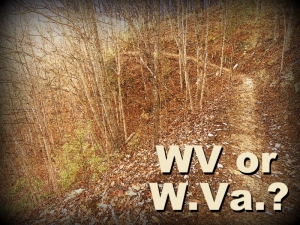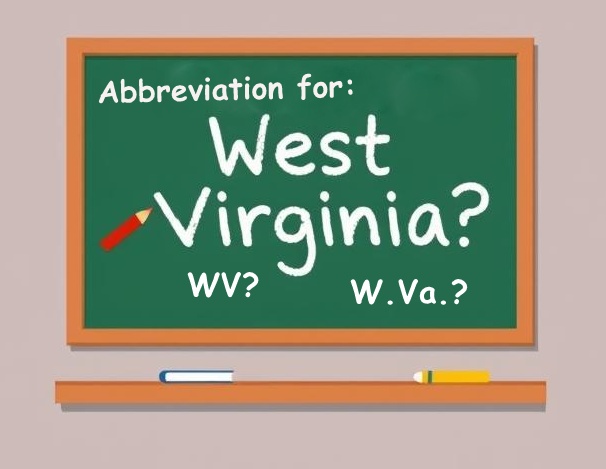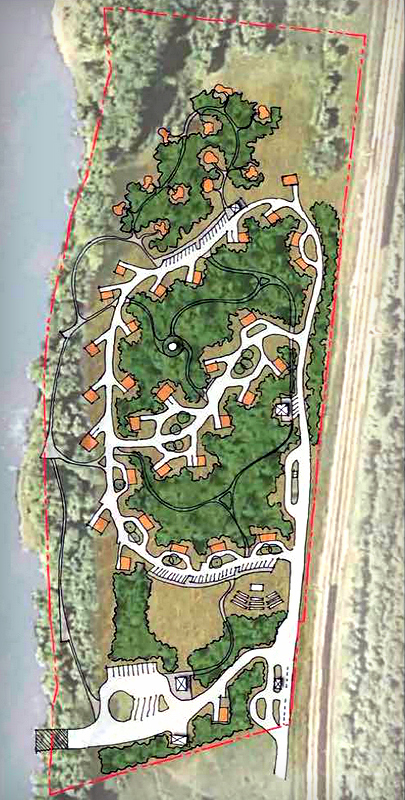CHARLESTON, W.Va. — Throughout this publication, you’ll see West Virginia abbreviated in two ways: “WV” and “W.Va.” This is intentional. We follow journalistic guidelines that emphasize clarity, even if it means using different forms depending on context.
Which abbreviation for West Virginia is correct?

According to official style guides for American English, “W.Va.” remains the preferred abbreviation: The punctuation helps prevent confusion, since no other state or common term uses the same form.
By contrast, “WV” is more ambiguous. It can stand for many other things, such as "weight variant," "Wabash Valley," "West Vancouver," and "Whitewater Valley."
Will “WV” ever be formally accepted?
The answer is both yes and no—it depends on use. The two-letter code “WV” first gained wide use in the U.S. Postal Service’s ZIP code system (for example, WV 25301, a Charleston mailing code). In that context, the format is clear: the state code comes first, followed by numbers, leaving little room for misunderstanding.
Because of this, “WV” became common in postal services, digital systems, and especially online communication. Search engines and databases often rely on “WV,” while recognition of “W.Va.” depends on how a platform’s algorithms are designed.
In short:
- “W.Va.” is the correct form in formal writing, journalism, and most traditional contexts.
- “WV” is standard in postal, electronic, and digital contexts.
Both have their place. It’s simply a matter of circumstance.
West Virginia Abbreviations
W.Va.: Preferred form in formal writing, journalism, and style guides. Chosen for clarity, as it does not overlap with other abbreviations.
WV: Official two-letter postal code. Common in ZIP codes (e.g., WV 25301) and widely used in digital communication and databases.
Guideline:
- Use W.Va. in written text where clarity matters.
- Use WV when citing postal addresses, computer systems, or digital search contexts.
Here's how W.Va. became to standard abbreviation for West Virginia
The development of standardized state abbreviations in the United States, particularly by professional writing organizations like the Associated Press (AP), emerged in the early 20th century as a practical response to the need for concise, uniform communication in journalism and other media.
As newspapers, telegraphs, and later wire services expanded, reporters and editors faced the challenge of fitting long state names into limited column space or telegraphic messages, which demanded brevity without sacrificing clarity. The AP formalized a set of two- or three-letter abbreviations for states, aiming to create consistency across publications and reduce confusion for readers.
These abbreviations were gradually adopted throughout the 20th century, with periodic updates to reflect changes in usage and standards. Unlike the postal service’s later two-letter codes, which were introduced in 1963, AP-style abbreviations were designed primarily for readability in text rather than automated sorting or addressing. This evolution illustrates how professional writing organizations balanced efficiency, clarity, and public understanding in the development of writing conventions.
Timeline of the West Virginia abbreviation
West Virginia’s abbreviation history reflects broader trends in journalistic clarity and postal efficiency. Starting in the mid-19th century, the U.S. Post Office introduced traditional, mostly three- or four-letter state abbreviations, with “W.Va.” being the recognized form by at least 1874. This style, employing periods and mixed capitalization, remained standard for formal writing and journalism for many decades.
A pivotal shift occurred in 1963, when the Post Office Department—due to limitations in address-processing machines and to accommodate ZIP codes—switched to two-letter postal abbreviations. For West Virginia, this meant the introduction of “WV”, replacing the longer forms in mailing and machine-readable contexts.
Despite the dominance of "WV" in postal and digital systems, professional writing guides—notably the Associated Press—have continued to prefer “W.Va.” well into the 21st century. The AP retained the traditional abbreviation for textual clarity, especially useful in contexts where brevity doesn't preclude disambiguation and where mixed-case punctuation aids reader comprehension. A petition from 2013 even sought to change the AP's stylebook, advocating for “W.V.,” but the association affirmed the continued use of “W.Va.” instead.
Today, both abbreviations are recognized—but their use depends on context. “WV” is the official postal code and is dominant in mailing, digital systems, and government forms. Meanwhile, “W.Va.” remains the preferred journalistic abbreviation, especially in news writing, datelines, and editorial content.
In summary:
- By 1874: Traditional abbreviation “W. Va.” firmly established.
- 1963: Postal system adopted “WV” as part of two-letter codes.
- Present: “WV” dominates postal/digital contexts; “W.Va.” persists in journalistic style.
Sign up to receive a FREE copy of West Virginia Explorer Magazine in your email weekly. Sign me up!


